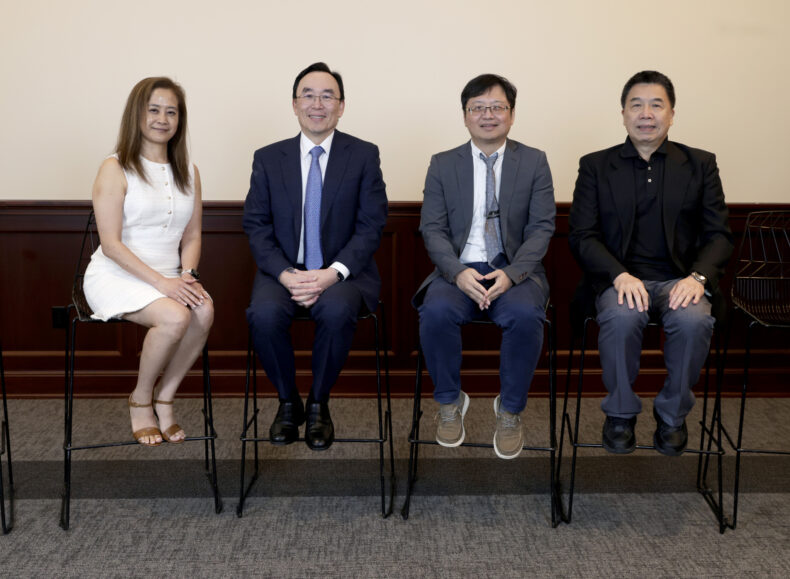
Amory Cox, a Pharmacy Practice resident, is making her second visit to the Biostatistics Clinic, a free, 75- minute research help session offered daily by the Department of Biostatistics.
Cox is required to complete a research project during her residency, and she has picked a tough one — comparing patients who have pharmacy consult services and those who do not while taking the IV antibiotic vancomycin.
There are many complex factors to balance — dosages, time in therapeutic range, time when blood draws are taken, adverse events and protocols on different hospital units, to name a few.
Over 45 minutes, the group assembled, including graduate students, faculty members and Biostatistics Chair Frank Harrell, Ph.D., discusses possible ways to design Cox’s study, control for various factors and ensure she ends up with meaningful data to analyze.
“I have limited experience working with statistics. It was really helpful to me to see the weaknesses in my design and have them point out areas to improve,” Cox said. “Statistics is so far above our heads for many of us doing research. The people at the clinic are so specialized and experienced, and I really appreciate their expertise.”
The Biostatistics Clinics may be the best-kept secret at Vanderbilt University Medical Center.
Sponsored by the Department of Biostatistics and the Vanderbilt Institute for Clinical and Translational Research (VICTR), the free service, with lunch provided, offers biostatistical help to anyone at Vanderbilt or Meharry Medical College who is conducting research or needs help interpreting medical journal articles.
Daily clinics have been offered since 2005, with an average of seven statisticians present.
According to Harrell, no other university offers a daily clinic that is attended by both Ph.D. and M.S. biostatisticians.
“It’s a collaborative, cooperative environment. No question is too dumb, and it’s low key and non-stressful,” Harrell said.

The clinics started as a way for the department to give back to the scientific community and as an important outreach effort for VICTR and Vanderbilt’s Clinical and Translational Science Awards (CTSA) grant, but clinics are also a great teaching tool for biostatistics graduate students to learn how to collaborate with investigators.
It is also a navigational stop for investigators unsure where to go for support and funding.
“The biomedical research infrastructure at Vanderbilt is the best in the U.S., but that means a big system of cores and shared resources. We help people navigate the system so they know who to talk to and how to apply for assistance,” Harrell said.
Each day of the week has a research theme, and attendees are encouraged to come on the appropriate day. The themes, starting with Monday, are general, high-dimensional data, surgery/anesthesiology/emergency/critical care medicine, other clinical research, and basic/animal research.
If attendees email their research topic in advance to biostat-clinic@list.vanderbilt.edu, the department will ask specialists to make a special effort to attend the clinic.
Kiersten Espaillat, APRN-BC, R.N., stroke services coordinator, came to the clinic for help managing the flood of data she gets about stroke patients at VUMC.
“I was feeling overwhelmed at the sheer amount of data. I wanted to be able to look at it and know how to interpret it for the best patient outcomes,” she said.
After a search of the VUMC website, she discovered the clinics and was thrilled that such a resource existed. Even without a specific research question in mind, she said there is a lot to be learned from the advice given to other attendees and from the meticulous record of each clinic kept online.
“It was helpful to listen and think about biases and design. It’s a great resource to be able to come back again and again and have so many experts together at once,” she said.
After two clinics, Cox felt like she was ready to make some decisions about how to design her study based on the group’s suggestions, but Harrell could tell she was still overwhelmed and offered some encouragement.
“Research is worth doing when it’s hard to do,” he said. “If it was easy, somebody would have already beaten you to it. Most research is painful on the front end, but you endure that pain to have the interpretation on the back end.”
For more information and the clinic schedule, visit biostat.mc.vanderbilt.edu/Clinics.
.

















